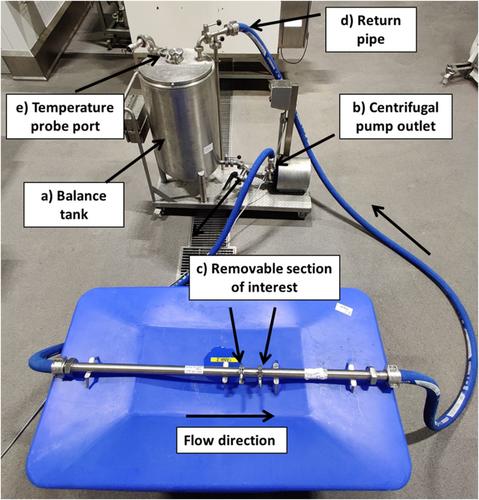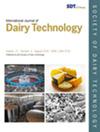Development of a modular test bed for evaluating sustainable CIP strategies and fouling removal during milk pasteurisation for cheese production
Abstract
Background
Effective cleaning-in-place (CIP) systems are critical for maintaining hygiene in cheese production facilities. Traditional CIP relies on thermal treatments and chemical detergents, but excessive chemical use contributes to environmental concerns, including wastewater treatment and chemical disposal costs. Optimising CIP processes requires a deeper understanding of fouling behaviour to develop more sustainable and efficient cleaning methods.
Aim(s)
This study aimed to develop a modular CIP test bed platform to simulate industrial fouling and cleaning conditions and investigate the impact of cheese milk composition and fouling development time on residual fouling after CIP, differentiating these effects from those of caustic detergent use and facilitating exploration of more sustainable CIP processes.
Methods
A modular CIP test bed platform with an artificial fouling model was developed to simulate industrial fouling, where fouled stainless steel coupons were inserted into a removable section in the test bed for cleaning. Statistical comparisons were conducted to evaluate the impact of varying protein-to-fat ratios and fouling development times on cleaning efficiency.
Major findings
Increasing the protein-to-fat ratio in cheese milk led to significantly higher residual fouling, rising from 7.47% to 14.19% (P < 0.001). Protein retention increased from 17.88% to 35.06% (P < 0.001), fat from 6.17% to 13.29% (P = 0.024), calcium from 15.24% to 21.57% (P < 0.001) and phosphorus from 9.71% to 21.59% (P < 0.001). Protein was identified as the primary contributor to persistent fouling, highlighting its role in cleaning challenges. The increase in fouling development time also led to increased total residual fouling (P = 0.015), but did not have a significant effect on fouling components.
Scientific and industrial implications
These findings emphasise the need for tailored CIP strategies that account for milk composition and fouling characteristics. The developed test bed provides a platform for further research on fouling behaviour and CIP optimisation in cheese production, supporting the development of more efficient and sustainable cleaning methods.


 求助内容:
求助内容: 应助结果提醒方式:
应助结果提醒方式:


